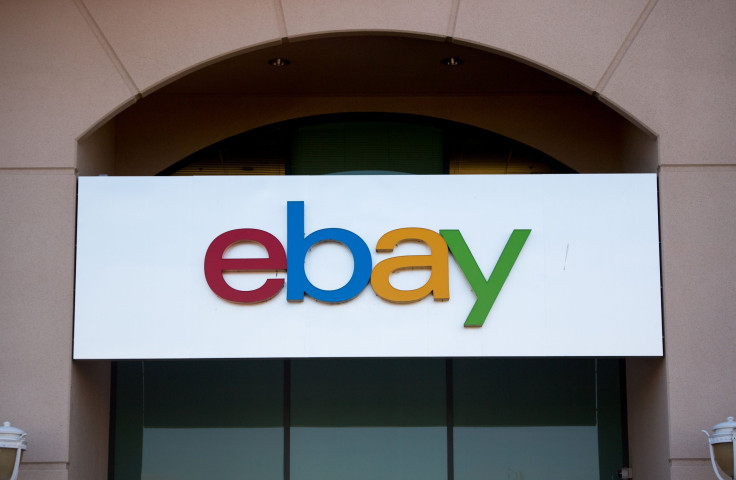eBay Doubles Down On Its Growth Strategy

eBay (NASDAQ:EBAY) will report its first-quarter 2018 earnings on Wednesday, April 25, after the market close. Gross merchandise volume (GMV) is an important metric to monitor the health of eBay's business. It measures the total value of all completed transactions on eBay's marketplace and StubHub platforms, and growth here can be a useful yardstick to gauge whether eBay is holding its turf or losing ground to the competition.
This article originally appeared in the Motley Fool.
In 2017, eBay showed an encouraging sign when GMV growth (excluding currency changes) accelerated from 5% to 7%, reaching $88.4 billion to end the year on a high note. This, in turn, drove a similar acceleration in revenue, which ended the year growing 7% in the third and fourth quarter.
The recent momentum has investors feeling optimistic about 2018, as they see management's investments to improve the marketplace beginning to pay off. What's impressive about eBay's performance is that GMV accelerated on top of a highly competitive retail environment that caused many retailers to report weak sales growth and store traffic.
Let's review what management has planned to keep this positive trend going.
Improving The Customer Experience
As part of its structured data initiative, eBay's marketplace has been vastly improved over the last few years to make searching and identifying that "perfect" item a more convenient and painless experience for the 170 million active buyers on the site. Management attributed the accelerated growth in GMV last year to this effort, and the company intends to double down on this in 2018. But with only 14% of eBay's traffic landing on marketplace pages that use structured data, there's still a lot of room for improvement.
CEO Devin Wenig said on the fourth-quarter conference call: "We intend to raise the bar on our customer experience and again accelerate growth despite tougher comps. We'll focus on key areas of our user experience, including search, delivery and returns, customer service, and payments while continually planting the seeds of technology innovation."
In 2018, management will make improvements like turning marketplace pages into a "full product-based commerce experience for relevant inventory." eBay has also been using advanced technologies, including augmented reality (AR) and artificial intelligence, to improve search relevancy and make buying or selling on eBay much easier. As one example, sellers can use AR to determine what size box they need to ship an item for sale.
Finally, eBay recently announced it will switch to third-party payment processor Adyen to handle checkout. The current operating agreement with PayPal is set to end in mid-2020. This will cause eBay to incur higher expenses of between $0.03 to $0.05 per share in 2018 as it starts to build out the technology required to handle the checkout process, but this is expected to yield greater benefits over time in the form of higher conversion rates, which should help GMV and revenue growth over the long term.
Guidance
Management expects the momentum that began in the second half of 2017 to continue through 2018. For the first quarter, revenue is expected to increase 7% to 9% (excluding currency) over the year-ago quarter to between $2.57 billion and $2.61 billion. Non-GAAP earnings per share are expected to be in the range $0.52 to $0.54, representing growth between 6% and 10% year over year.
As for the full year, management's early guidance calls for earnings growth of 12% to 15% over 2017, which is higher than the top line's expected growth of 7% to 9% (excluding currency). Share repurchases and favorable changes in currency are the primary reasons why earnings are expected to outpace revenue growth.
Investments in the marketplace, as well as eBay's new marketing campaign, took eBay's non-GAAP operating margin down about 160 basis points to 28.4% in 2017. Management expects operating margin in 2018 to stabilize between 27% and 29%. At the midpoint, operating margin could be down 40 basis points, reflecting the adoption of a new accounting standard and higher expenses for the migration to Adyen. This guidance also includes ongoing spending in structured data and marketing, both of which will be offset by a reduction in spending in other areas.
Final Thoughts
The changes management is making to the marketplace are vital to keeping eBay in a competitive position versus fast-growing rivals like Amazon and Walmart, which are also investing heavily in their e-commerce businesses. eBay is betting on technological improvements to keep its edge. As long as these investments continue to show positive results in the form of GMV growth, eBay shareholders should enjoy more gains over the long term.
John Mackey, CEO of Whole Foods Market, an Amazon subsidiary, is a member of The Motley Fool’s board of directors. John Ballard owns shares of PayPal Holdings. The Motley Fool owns shares of and recommends Amazon, eBay, and PayPal Holdings. The Motley Fool has a disclosure policy.






















